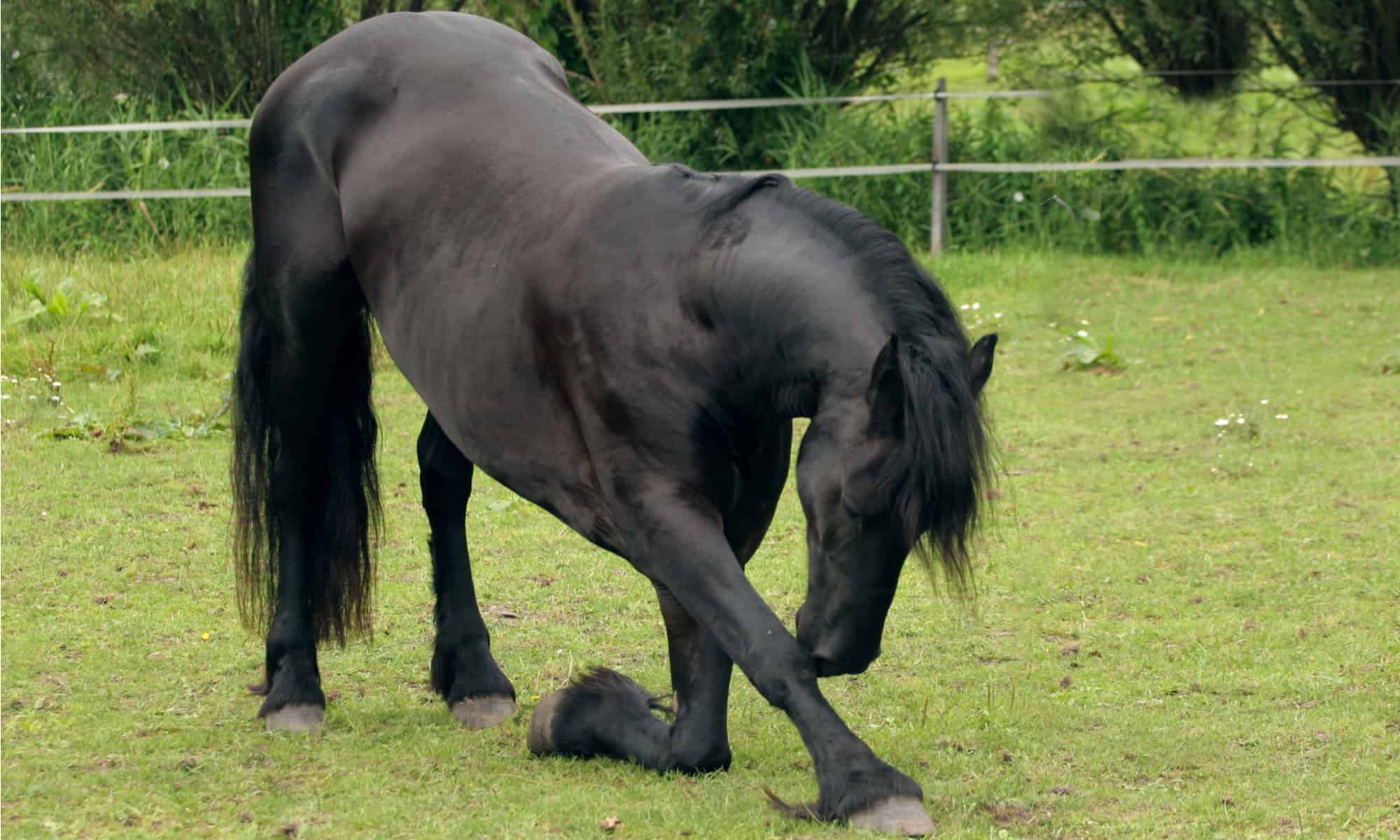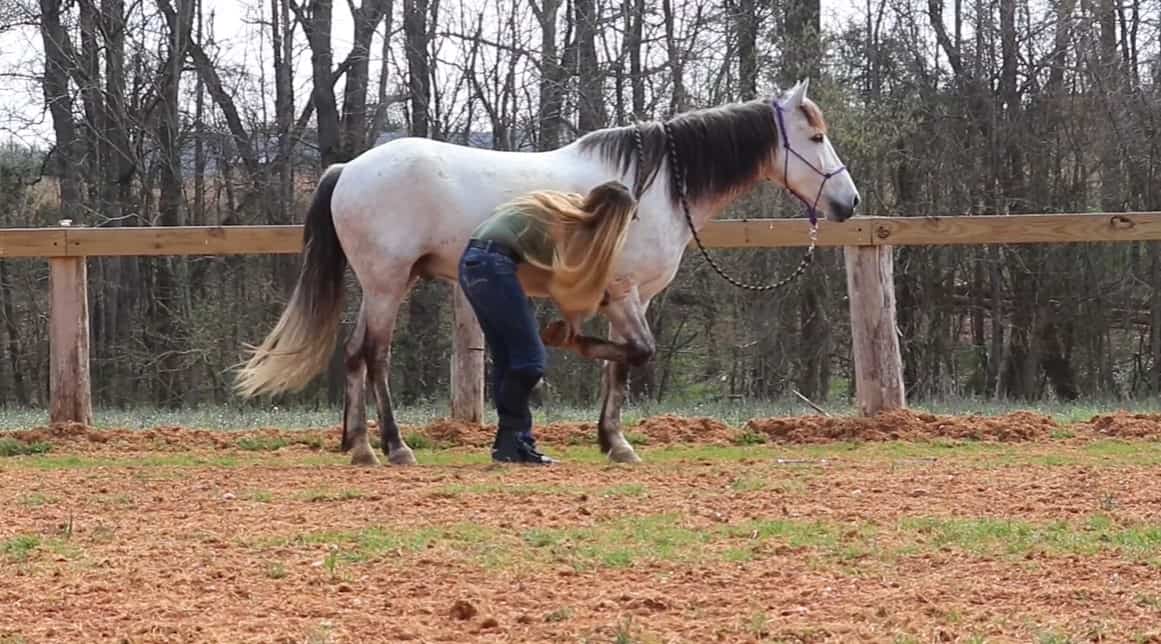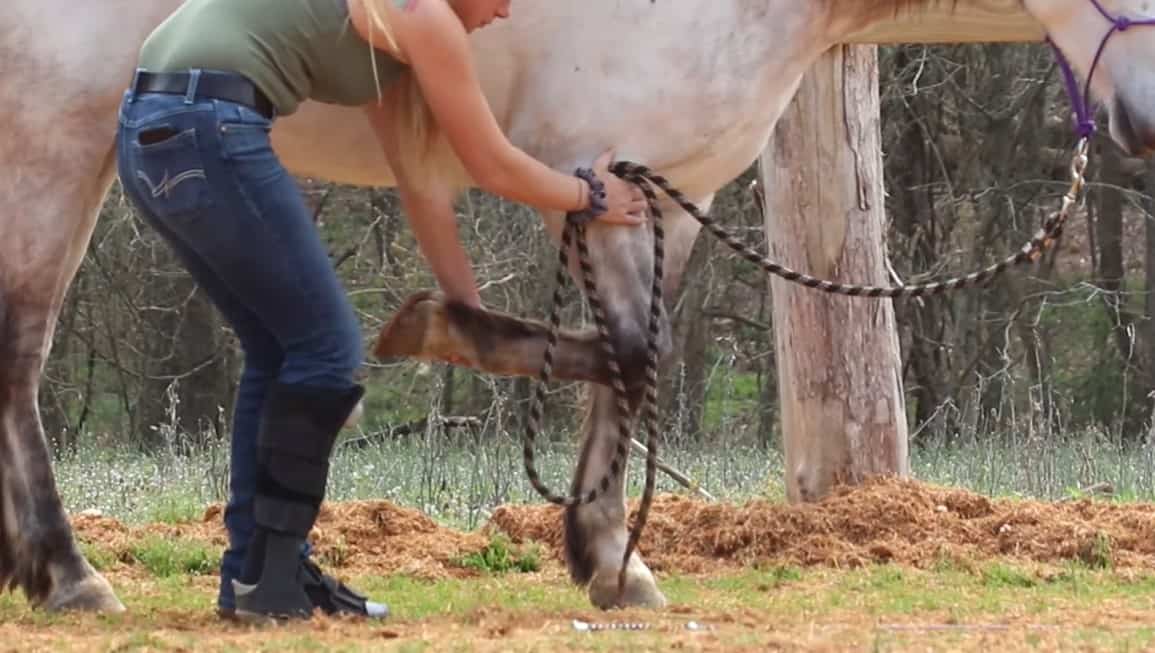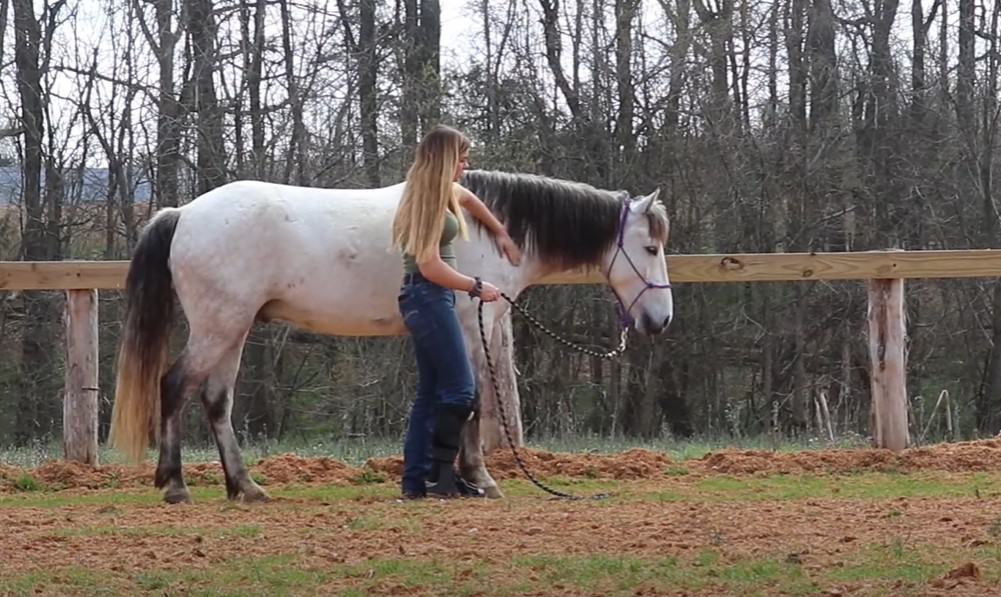Getting your horse to perform some tricks is one of the most fun aspects of owning an equine pal. The bow is a great trick to start your horsy on; it is relatively easy, and you can do it with or without ropes, which adds to the fun.
For horse owners who are new to trick training, I always recommend teaching the bow first. It can be an excellent way to build trust, nurture your relationship, and boost the horse’s confidence.
I wrote this guide on how to teach a horse to bow to show you two different ways to pull of this new trick. As you will found out, you really do not have to be a pro to teach your horsy the bow—a bit of patience and a keen understanding of your horse will go a long way.
So, let us get started!
You will need:
- A lead rope
- A fitting halter
- Lunge whip
- Treats (optional)
Step-By-Step Guide To Teach a Horse to Bow
Below is a description of the two methods you can use to train your horse to bow.
Method 1
Step 1: Ask your horse to back up
Before you can teach your horse to bow, you must train him to back up. Backing up is one of the basic yet crucial groundwork tasks your horse needs to learn. If you don’t teach this, you will find it difficult to get the horse to do anything else.
The backup is important because the horse needs to easily move its hind legs to stretch out one of its front legs to bow. Otherwise, he will end up sitting on his hind feet.
You will know that your horse is backing up correctly when you move toward the horse with little effort, and the horse responds by moving back.
To get your horse to back up, first, face him with your body positioned parallel to his head and shoulder blades. Apply slight pressure on the halter and move the lead rope toward the horse’s chest as you walk toward him. Release the pressure as soon as the horse moves back to cue that he is doing the right thing.
Repeat this training a few times until your horse can back up with just your body pressure and without the need for a halter or lead rope. The goal is for your equine pal to back up automatically when you ask him to bow.
Step 2: Ensure your horse is comfortable
This method of teaching your horse how to bow involves touching his legs and lifting his hooves. For this to work, your horse must be comfortable with the touching and lifting; otherwise, he might try to back away from you or, even worse, kick.
Stand by the horse’s side and start by stroking his leg gently. This will ease his nerves and signal that there is something you need for him to do.
Next, lift his hoof and fold the leg so that the hoof faces back out and the knee touches the chest. Avoid pulling the leg outward, which can hurt the horse, causing him to associate bowing with pain. Be firm but gentle when handling your equine pal.
Step 3: Apply pressure to the horse’s leg
Now that your horse is familiar with having his leg touched and lifted, it is time to give his first cue to get him to bow. Ideally, you want him to fold one leg and bring it to the ground while stretching out the other leg—this is the classic bowing position.
Stand a few inches behind the horse’s leg. If you stand on the right leg, use your left hand to pick up his leg and bend it, so the hoof is pointing out.
Hold the lead rope in your right hand, and use this same hand to apply backward pressure on the upper part of the horse’s bent leg just slightly below the shoulder blade. This will cue the horse to pull back, bend and touch the ground with its right side leg, allowing the front left side leg to stretch out. Remember to put some pressure on the lead rope to cue the horse to back up.
The combination of these actions will cause the horse to rock back. This is a good sign as it shows that he obeys you, understands the cues, and is already learning how to bow.
Step 4: Release and reward
Release the pressure as soon as the horse rocks back. This will let him know that he is doing the right thing, so he will keep rocking back every time you cue him to do so.
It is also a good idea to reward your horse for taking cues correctly. Give him his favorite treat and a nice pat for a job well done. If you opt to treat your horse, make sure that you bring the treat to him and that he doesn’t grab it off your hand.
Some people use treats to get the horse to bend and bow. Although this method generally works, I don’t usually recommend it because the horse may refuse to bow if you do not avail his favorite treat, which puts him in control instead of the other way around. You should be in control of your horsy! I have always thought it best to give a treat as positive reinforcement for a good job.
Method 2
The second method to teach a horse to bow is the back up ad tap method. Follow these steps to train your horse using this method:
Step 1: Get into the correct position
Stand with your body facing the horse. Position yourself between the horse’s head and shoulder blade so that you can get him to back up.
Next, apply pressure using the lead rope, slightly tagging the rope back toward the horse’s throat. With this move, you will cue the horse to back up and get ready for a bow.
Step 2: Back up and tap
For this method, you will prompt your horse to back up while tapping his knee or any part of the leg you want him to pinch back and bend to the ground.
Tag on the lead rope lightly to apply pressure and get the horse to back up. With the other hand, use a lunge whip to tap on any part of the horse’s leg. This should prompt him to bend this leg and bring it to the ground while stretching out the other leg.
Step 3: Release the pressure and cease tapping
Once the horse bows, release the pressure on the lead rope and stop tapping. Now is a good time to reward horsy with his favorite treat and a pat.
If you want the horse to retain the bow for a little longer, continue tapping on the leg lightly while applying some pressure on the lead rope. Release the pressure to cue the horse to stand up from its bowing position.
This method takes a bit longer to teach and will require a couple of training sessions for your horse to master how to bow. The upside is the bow here is more defined, and the horse will hold it a little longer.
There you have it! That’s all there is to teach a horse to bow. But, before we wrap up, I will share some insider tips you can use to improve your and your horse’s experience.
Extended Tips
- A horse depends entirely on your cues when learning new tricks. You must time your pressure, release, and reward sequence for your horse to understand and obey you. If you apply pressure when you should be releasing, the horse will think he is being punished for obeying your cue.
- When training a new horse, undertake some simple obedience training and groundwork to build a bond of trust. You may even take a walk or an easy ride to familiarize yourself with the horse’s temperament.
- Ease your horse’s nerves. Equines are very sensitive to their surroundings. The more at ease he is, the faster your horsy will learn new tricks. Calm him down by walking him around the training ground, talking to him gently, and patting him reassuringly.
- Keep your training sessions short. Intelligent as they may be, horses have a short attention span. To keep yours interested in learning, limit sessions to 10 minutes at a time. Don’t try to teach him everything at once; he will resist and rebel, setting you back on your progress.
Summary
As you can see, the bow is one of the simplest tricks for a horse to learn. That said, each horse is different; you must understand the personality of your equine pal to train him successfully. Be patient and never use the lunge whip or any other object to punish him when he seemingly takes a long time to learn a new task. In no time, he will bow promptly when you ask.











